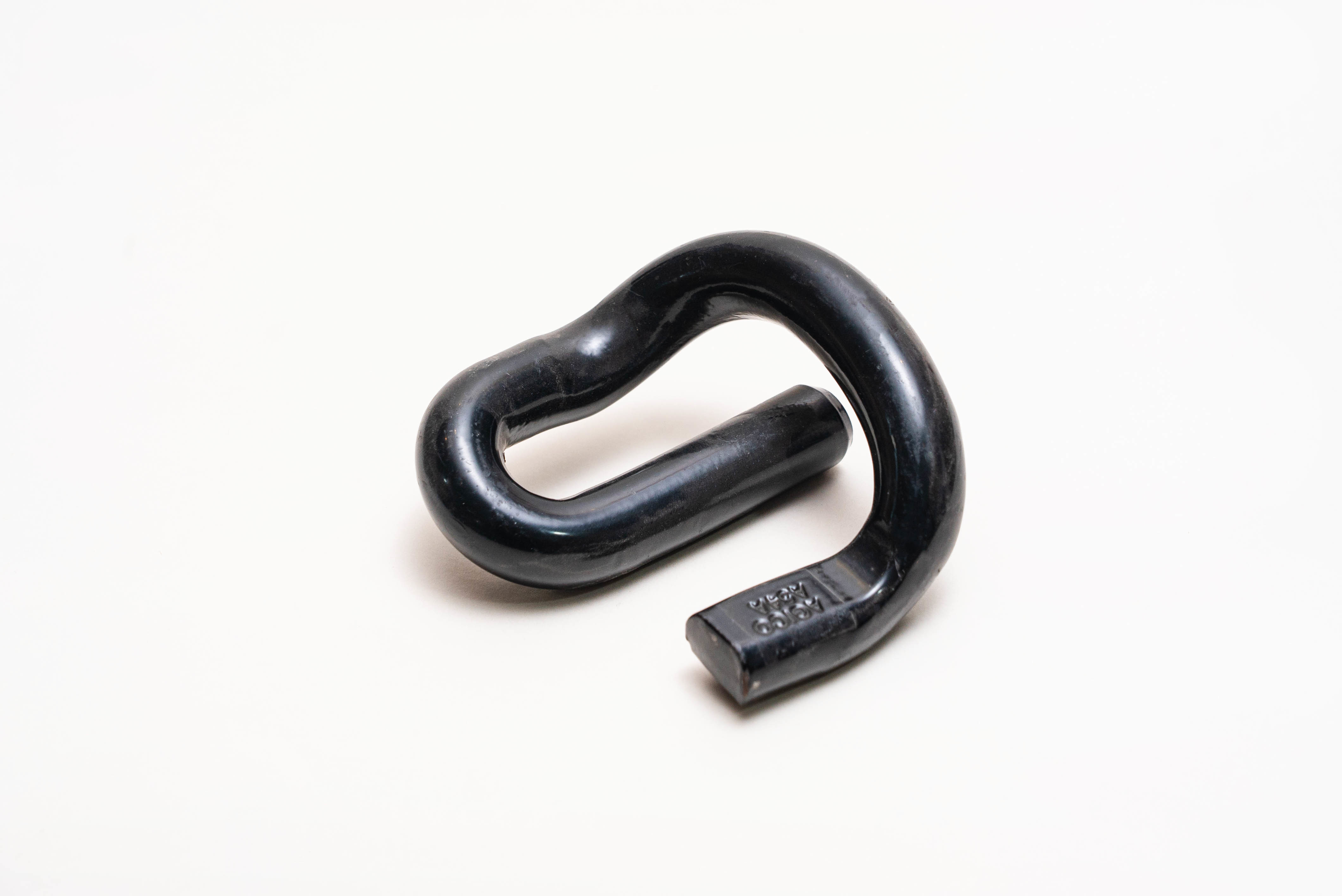The Essential Role of Rail Track Spikes in Modern Rail Infrastructure
Apr 24,2025
The Essential Role of Rail Track Spikes in Modern Rail Infrastructure Table of Contents 1. Introduction to Rail Track Spikes 2. Understanding the Function of Rail Track Spikes 3. Types of Rail Track Spikes 3.1. Cut Spikes 3.2. Dog Spikes 3.3. Plastic Rail Spikes 3.4. Screw Spikes 4. The Manufacturing Process of Rail Track Spikes 5. Innovations and Technology in Rail Track Spike

The Essential Role of Rail Track Spikes in Modern Rail Infrastructure
Table of Contents
1. Introduction to Rail Track Spikes
2. Understanding the Function of Rail Track Spikes
3. Types of Rail Track Spikes
3.1. Cut Spikes
3.2. Dog Spikes
3.3. Plastic Rail Spikes
3.4. Screw Spikes
4. The Manufacturing Process of Rail Track Spikes
5. Innovations and Technology in Rail Track Spikes
6. The Importance of Rail Track Spikes in Safety Standards
7. Maintenance Considerations for Rail Track Spikes
8. Future Trends in Rail Track Spike Design
9. Frequently Asked Questions (FAQs)
10. Conclusion
1. Introduction to Rail Track Spikes
Rail track spikes are essential components in the stability and safety of modern rail infrastructure. These small yet powerful fasteners hold the rails securely in place, ensuring trains run smoothly and efficiently. The significance of rail track spikes goes far beyond mere attachment; they play a vital role in the overall performance of the railway system. In this article, we will explore the various aspects of rail track spikes, their types, functions, and innovations that shape the future of rail transport.
2. Understanding the Function of Rail Track Spikes
At the core of rail infrastructure, the primary function of rail track spikes is to connect the rails to the railway ties or sleepers. This connection is crucial for maintaining gauge, which is the distance between the inner edges of the rails. Rail track spikes help prevent lateral movement and uplift, keeping the track aligned and stable under the weight and force of passing trains. Without these fasteners, rails could shift, leading to derailments, accidents, and service disruptions.
Moreover, rail track spikes assist in distributing the load of the train across the ties, minimizing wear and tear on both the rails and the track structure. Understanding these functions underscores the importance of high-quality rail track spikes in maintaining the operational integrity of rail systems.
3. Types of Rail Track Spikes
There are various types of rail track spikes, each designed for specific applications and environments. The selection of the right type is crucial for maximizing performance.
3.1. Cut Spikes
Cut spikes are the most traditional form of rail fastening. These tapered steel spikes have a flat head and are driven into wooden sleepers to secure the rail. They are known for their strength and reliability, making them a staple in many rail applications.
3.2. Dog Spikes
Dog spikes feature a unique shape that allows them to be driven into concrete and wooden ties. Their design offers enhanced resistance to lateral movement, providing a secure fit that is essential for high-speed rail operations.
3.3. Plastic Rail Spikes
In an effort to reduce corrosion and improve durability, plastic rail spikes have gained popularity. These spikes are often used in areas with high humidity or extreme weather conditions, offering a lightweight yet robust alternative to traditional metal spikes.
3.4. Screw Spikes
Screw spikes are fastened into the sleepers using a screw mechanism, allowing for easy installation and removal. They are particularly beneficial in maintenance applications where adjustments to the rail alignment are frequently required.
4. The Manufacturing Process of Rail Track Spikes
The manufacturing of rail track spikes involves several critical steps to ensure their quality and performance. This process typically begins with the selection of high-grade steel, known for its strength and resistance to wear and tear.
The steel is then heated and shaped through forging, where it is molded into the desired spike form. After forging, spikes undergo a heat treatment process to enhance their hardness and tensile strength. Finally, spikes are subjected to rigorous quality control measures, including tensile testing and material inspections, to ensure they meet industry standards.
5. Innovations and Technology in Rail Track Spikes
As the rail industry continues to evolve, so too do the innovations surrounding rail track spikes. Recent advancements focus on materials and designs that enhance performance and longevity. For instance, the introduction of composite materials offers reduced weight and improved resistance to environmental factors.
Additionally, smart technology is making its way into rail fastening systems. Sensors embedded within rail track spikes can monitor stress and strain, providing real-time data on the health of the rail infrastructure. This proactive approach to maintenance not only improves safety but also reduces downtime and operational costs.
6. The Importance of Rail Track Spikes in Safety Standards
Safety is paramount in the railroad industry, and rail track spikes play an essential role in adhering to established safety standards. Regulatory bodies set strict guidelines regarding the quality and performance of rail fastening systems.
Proper installation and maintenance of rail track spikes are critical in preventing accidents and ensuring the safe movement of trains. Regular inspections help identify any potential issues with spikes, allowing for timely replacements and repairs. This proactive approach is vital for maintaining the integrity of the rail network.
7. Maintenance Considerations for Rail Track Spikes
Ongoing maintenance of rail track spikes is crucial for the longevity and safety of rail infrastructure. Regular inspections should include checks for wear, corrosion, and proper alignment.
Technicians often employ specialized tools to assess the condition of spikes and their effectiveness in holding the rails securely. When signs of wear are detected, timely replacements are necessary to prevent any compromise in rail safety.
Additionally, environmental factors such as extreme weather or nearby construction activities can impact the integrity of rail track spikes. Therefore, proactive maintenance and monitoring are essential to ensure the continued reliability of rail systems.
8. Future Trends in Rail Track Spike Design
As the rail industry looks ahead, several trends are emerging in the design and manufacturing of rail track spikes. Sustainability is becoming a significant focus, with efforts to develop eco-friendly materials and manufacturing processes that reduce environmental impact.
Moreover, the integration of technology in rail fastening systems is expected to expand. Advanced monitoring systems that provide data analytics can enhance predictive maintenance strategies, leading to improved performance and safety.
The continued push for high-speed rail systems also demands innovation in rail track spikes, as they must withstand greater forces and stresses. This advancement will drive research and development in materials science and engineering to create spikes that meet these evolving demands.
9. Frequently Asked Questions (FAQs)
What are the main functions of rail track spikes?
Rail track spikes primarily secure the rails to the ties, maintaining alignment and stability while distributing the load of passing trains.
How often should rail track spikes be inspected?
Regular inspections are recommended, typically every six months to a year, depending on the environment and usage of the rail system.
What materials are commonly used to manufacture rail track spikes?
Common materials include high-grade steel and composite materials designed to offer durability and resistance to environmental factors.
Can rail track spikes be reused?
While some spikes can be reused if they are in good condition, it is often recommended to replace them for safety and reliability.
What advancements are being made in rail track spike technology?
Innovations include the use of composite materials, smart technology for monitoring, and designs that enhance performance and longevity.
10. Conclusion
In summary, rail track spikes are a foundational component of modern rail infrastructure, playing a vital role in safety, stability, and efficiency. With the ongoing advancements in materials and technology, these essential fasteners will continue to evolve, meeting the demands of an ever-changing rail industry. By understanding the types, functions, and innovations surrounding rail track spikes, stakeholders can ensure the reliability and safety of rail systems for years to come. Enabling the seamless operation of rail transport, rail track spikes remain an indispensable part of our transportation landscape.
Recommended
There is one sheet production line and two high-precision engraving machines, with an annual production capacity of 6 million railway special height adjustment pads.
Electrostatic spraying workshop
There is one electrostatic spray equipment production line and one spray paint production line, with an annual production capacity of 10,000 tons.
Contact Us


